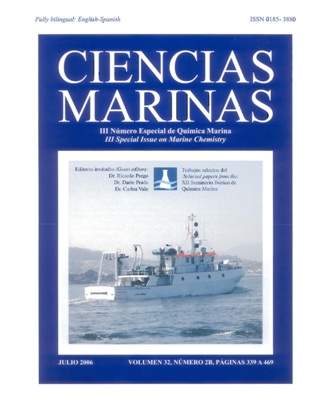Presence of Cr, Cu, Fe and Pb in sediments underlying mussel-culture rafts (Arosa and Vigo rias, NW Spain). Are they metal-contaminated areas?
Main Article Content
Abstract
Despite the world-wide expansion of mussel aquaculture, there is still a lack of knowledge of the accumulation of metals in sediments underlying raft polygons. This is addressed in the present study in one of the most productive areas: the Galician rias (50% of total world mussel production). Surface and subsurface sediment samples were taken from the inner, middle and outer polygon zones along the Arosa (2292 mussel rafts) and Vigo (487 rafts) rias. The concentrations measured in the sediment fine fraction ranged from 70 to 154 µg g–1 for Cr, from 25 to 92 µg g–1 for Cu, from 28 to 37 mg g–1 for Fe and from 35 to 239 µg g–1 for Pb. Only a certain contamination was detected in the underlying surface sediments of polygons from the inner (Cu, Pb) and middle (Pb) zones of Vigo Ria; however, the increase in metal concentrations in sediments below rafts depends more on landbased anthropogenic sources than on the presence of mussel rafts or biomagnification processes.
Downloads
Article Details
This is an open access article distributed under a Creative Commons Attribution 4.0 License, which allows you to share and adapt the work, as long as you give appropriate credit to the original author(s) and the source, provide a link to the Creative Commons license, and indicate if changes were made. Figures, tables and other elements in the article are included in the article’s CC BY 4.0 license, unless otherwise indicated. The journal title is protected by copyrights and not subject to this license. Full license deed can be viewed here.

